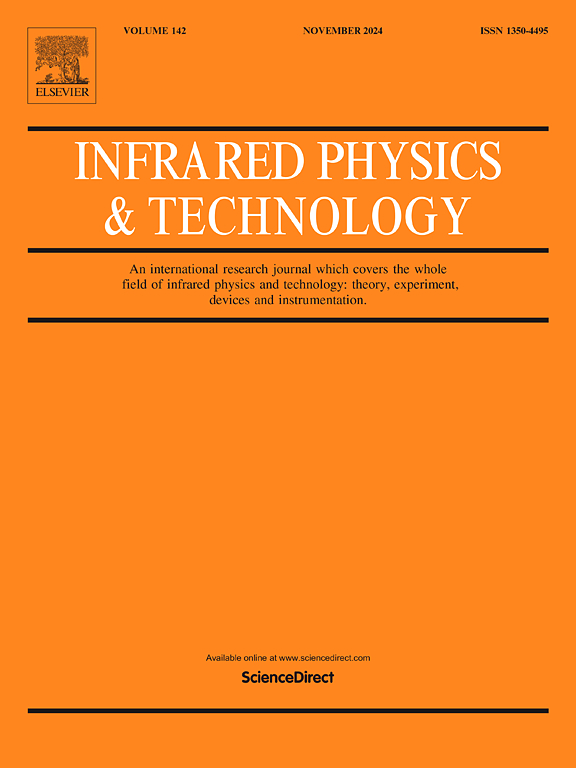Study on area-dependent multiplication region width and optimization of HgCdTe avalanche focal plane
IF 3.1
3区 物理与天体物理
Q2 INSTRUMENTS & INSTRUMENTATION
引用次数: 0
Abstract
Linear-mode HgCdTe avalanche photodiodes (APDs) have attracted significant attention due to their exceptionally low excess noise, operational bias ranging from −12 to 0 V, and linearly tunable gain. These characteristics suggest promising future applications in optical observations. The design of the multiplication region based on the PIN structure is critical, as it directly influences the photoelectric properties of the device, including gain and excess noise. This paper primarily investigates the effect of implanted areas on the multiplication region and examines area-related gain and noise characteristics of mid-wavelength infrared (MWIR) HgCdTe APDs at a temperature of 80 K. Studies conducted on diodes with varying implanted areas indicate that those with larger implanted areas create a wider multiplication region, which leads to lower gain and higher excess noise factors. Finally, 30 μm pitch 640 × 512 array HgCdTe APDs for cut-off wavelengths 4.8 µm at 80 K corresponding to compositions xCd = 0.31 were fabricated. The number of noise bad pixels and the band-to-band tunneling (BBT) current have been significantly reduced due to the optimized the multiplication region width. Consequently, high-definition imaging under short integration times has been successfully achieved.
HgCdTe雪崩焦平面面积倍增区宽度及优化研究
线性模式HgCdTe雪崩光电二极管(apd)由于其异常低的过量噪声,工作偏置范围从- 12到0 V,以及线性可调的增益而引起了极大的关注。这些特征表明在光学观测中有很好的应用前景。基于PIN结构的倍增区设计至关重要,因为它直接影响器件的光电性能,包括增益和过量噪声。本文主要研究了植入区域对倍增区的影响,并研究了在80k温度下中波长红外(MWIR) HgCdTe apd的面积相关增益和噪声特性。对不同植入面积的二极管进行的研究表明,植入面积越大的二极管产生的倍增区越宽,从而导致较低的增益和较高的多余噪声因子。最后,制备了30 μm间距640 × 512阵列的HgCdTe apd,截止波长4.8µm, 80k,对应成分xCd = 0.31。由于优化了倍增区宽度,噪声坏像素数和带间隧穿电流显著降低。因此,在较短的积分时间内成功地实现了高清晰度成像。
本文章由计算机程序翻译,如有差异,请以英文原文为准。
求助全文
约1分钟内获得全文
求助全文
来源期刊
CiteScore
5.70
自引率
12.10%
发文量
400
审稿时长
67 days
期刊介绍:
The Journal covers the entire field of infrared physics and technology: theory, experiment, application, devices and instrumentation. Infrared'' is defined as covering the near, mid and far infrared (terahertz) regions from 0.75um (750nm) to 1mm (300GHz.) Submissions in the 300GHz to 100GHz region may be accepted at the editors discretion if their content is relevant to shorter wavelengths. Submissions must be primarily concerned with and directly relevant to this spectral region.
Its core topics can be summarized as the generation, propagation and detection, of infrared radiation; the associated optics, materials and devices; and its use in all fields of science, industry, engineering and medicine.
Infrared techniques occur in many different fields, notably spectroscopy and interferometry; material characterization and processing; atmospheric physics, astronomy and space research. Scientific aspects include lasers, quantum optics, quantum electronics, image processing and semiconductor physics. Some important applications are medical diagnostics and treatment, industrial inspection and environmental monitoring.

 求助内容:
求助内容: 应助结果提醒方式:
应助结果提醒方式:


